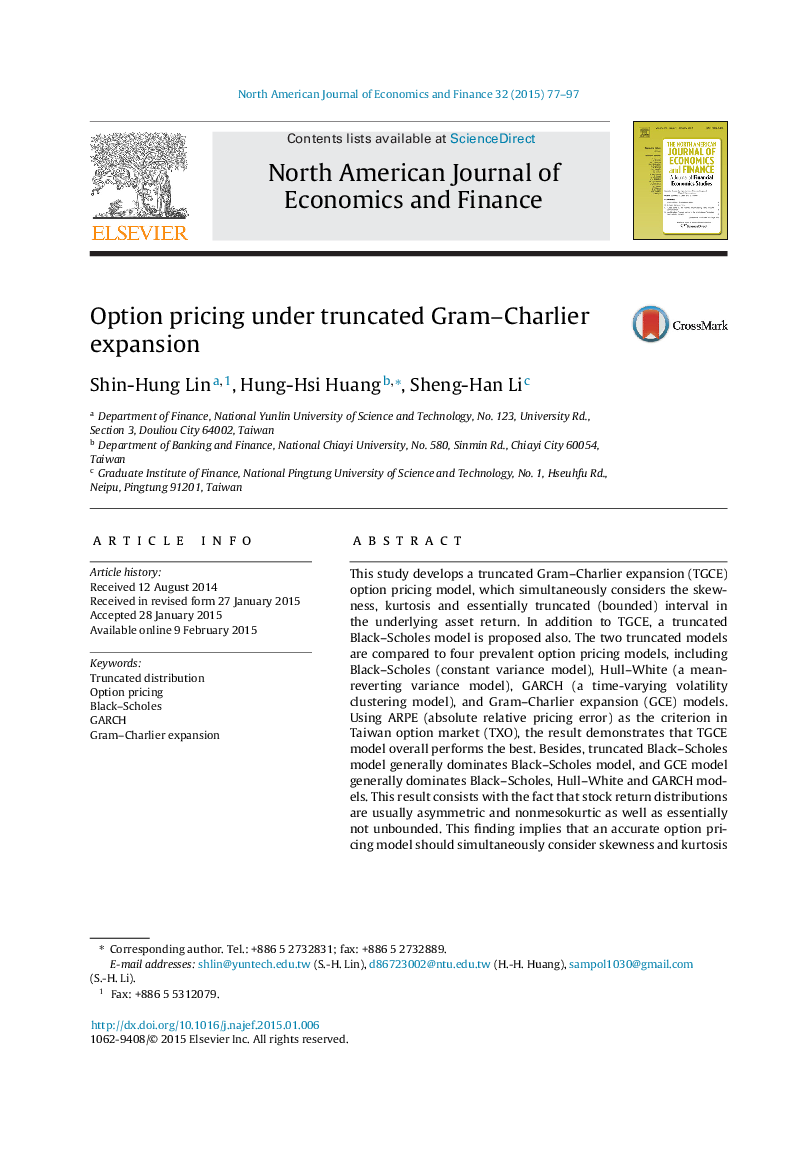| Article ID | Journal | Published Year | Pages | File Type |
|---|---|---|---|---|
| 974003 | The North American Journal of Economics and Finance | 2015 | 21 Pages |
•We develop a truncated Gram–Charlier expansion option pricing model.•The model considers skewness, kurtosis and truncated range in stock return.•The model performs best compared to five option pricing models.•The model performs better than Hull–White and GARCH models.•Truncated Black–Scholes model generally dominates Black–Scholes model.
This study develops a truncated Gram–Charlier expansion (TGCE) option pricing model, which simultaneously considers the skewness, kurtosis and essentially truncated (bounded) interval in the underlying asset return. In addition to TGCE, a truncated Black–Scholes model is proposed also. The two truncated models are compared to four prevalent option pricing models, including Black–Scholes (constant variance model), Hull–White (a mean-reverting variance model), GARCH (a time-varying volatility clustering model), and Gram–Charlier expansion (GCE) models. Using ARPE (absolute relative pricing error) as the criterion in Taiwan option market (TXO), the result demonstrates that TGCE model overall performs the best. Besides, truncated Black–Scholes model generally dominates Black–Scholes model, and GCE model generally dominates Black–Scholes, Hull–White and GARCH models. This result consists with the fact that stock return distributions are usually asymmetric and nonmesokurtic as well as essentially not unbounded. This finding implies that an accurate option pricing model should simultaneously consider skewness and kurtosis and truncated interval in the underlying asset return. Additionally, the ARPE against moneyness for all option pricing models forms a negative slope smile curve. Moreover, the pricing performance of TGCE model is so stable to moneyness.
